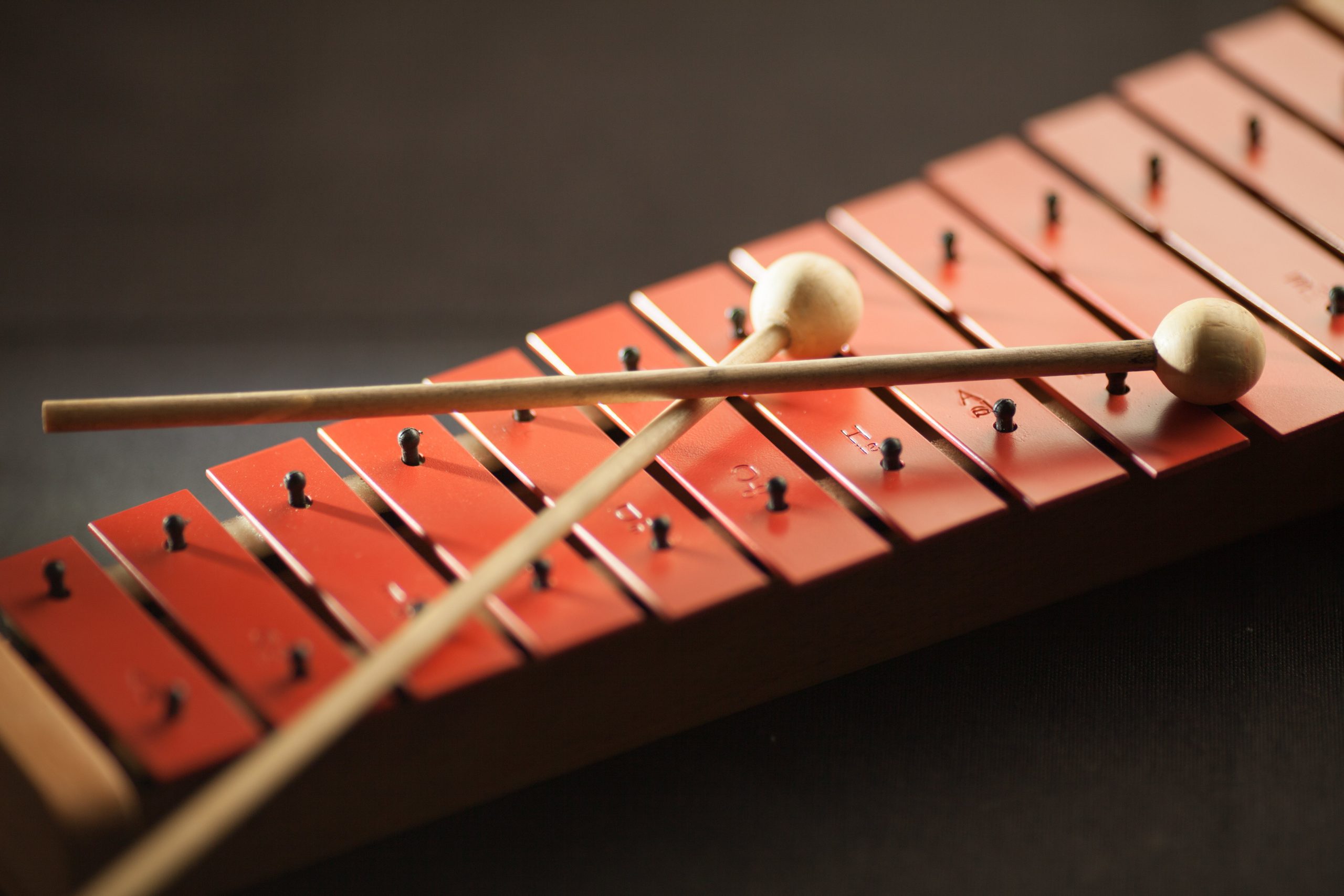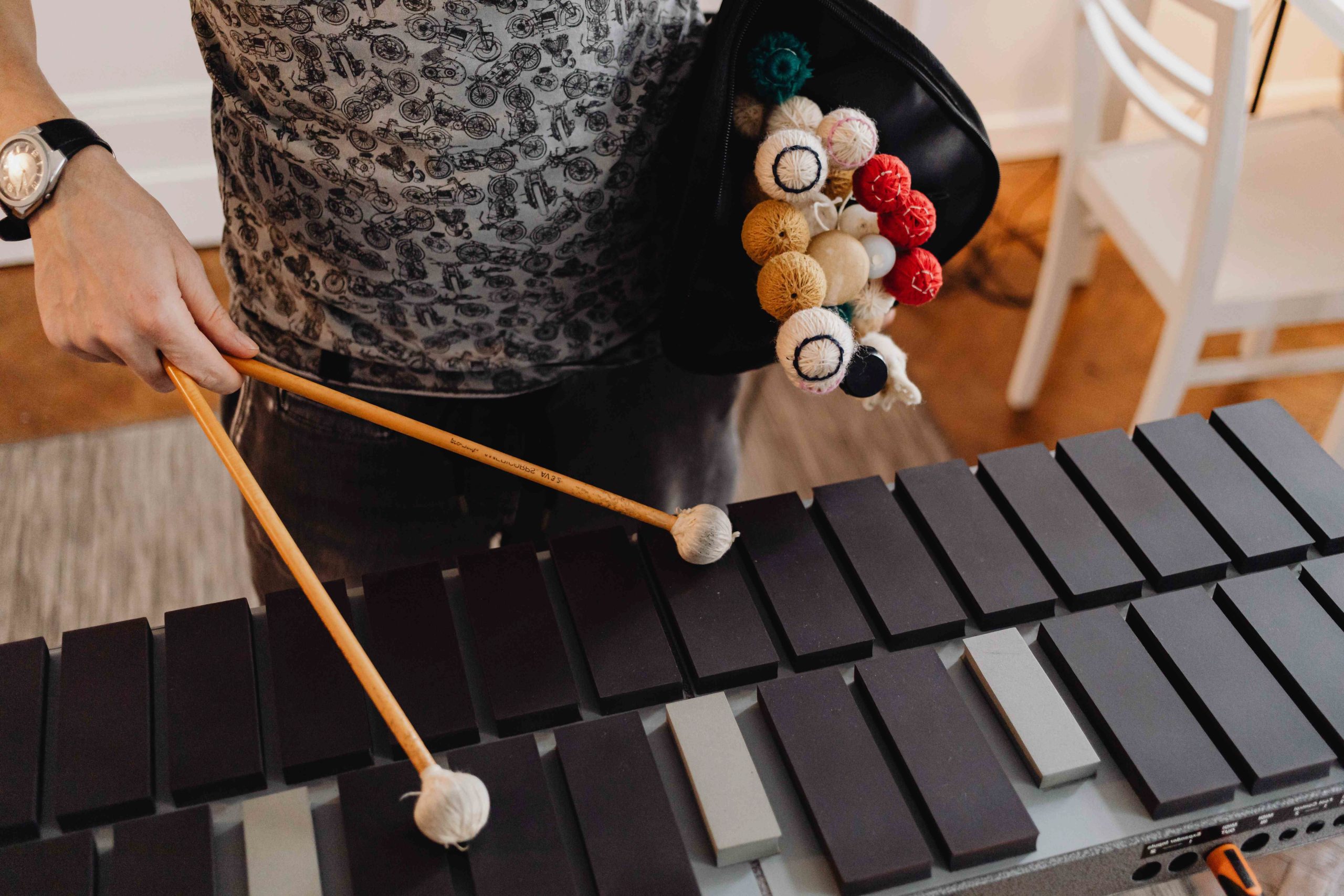Xylophone Selection Tips
Xylophones are a beautiful and versatile percussion instrument that have been around for centuries. They are made up of wooden bars that are struck with mallets to produce musical notes. They are a popular instrument among musicians of all skill levels, from beginners to professionals. However, with so many different types and models of xylophones available, it can be difficult to know which one to choose. In this article, we will be discussing some tips to help you make an informed decision when selecting a xylophone.
The first thing to consider when selecting a xylophone is the size of the instrument. Xylophones come in a variety of sizes, from small, portable models to large, concert-size instruments. If you’re a beginner or if you’re looking for an instrument for your child, a small, portable xylophone may be the best option. These xylophones are easy to transport and are a great option for those who are just starting to learn how to play. On the other hand, if you’re a professional musician or you’re looking for an instrument for a school or community band, a larger, concert-size xylophone may be a better choice.
Another important factor to consider when selecting a xylophone is the number of notes it has. Xylophones can have anywhere from two to four octaves. The more notes a xylophone has, the more versatile it will be. However, it’s important to keep in mind that the more notes a xylophone has, the more expensive it will be. If you’re a beginner, a xylophone with two octaves may be a good starting point, while a professional musician may prefer a xylophone with four octaves.
The materials used to make a xylophone are also an important consideration. Xylophones can be made from a variety of materials, including wood, metal and plastic. Wooden xylophones are known for their warm, rich tone, while metal and plastic xylophones have a brighter, more cutting tone. The choice of material will depend on your personal preference and the type of music you plan to play.
The quality of the mallets is also an important consideration when selecting a xylophone. Mallets come in a variety of materials, including rubber, wood, and plastic. Rubber mallets are known for their soft and mellow tone, while wood and plastic mallets have a brighter, more cutting tone. The choice of mallets will depend on the type of music you plan to play and your personal preference.
Finally, it’s important to consider the brand and model when selecting a xylophone. Some of the most well-known and respected xylophone manufacturers include Yamaha, Pearl and Malletech. These companies have a long history of producing high-quality xylophones and have a reputation for producing instruments that are durable and easy to play.
Types of Xylophones
Xylophones are a beautiful and versatile percussion instrument that come in a variety of types and models. Each type has its own unique characteristics, making it important to understand the differences when selecting a xylophone. In this article, we will be discussing the different types of xylophones available, including their key features, benefits, and best uses.
The first type of xylophone is the concert xylophone. These xylophones are the largest and most expensive type of xylophone, and are typically used in orchestral and concert settings. They have a range of four octaves and are made from high-quality materials such as rosewood or padauk. The bars of a concert xylophone are also typically wider and thicker than those of other types of xylophones, which gives them a warm, rich tone.
The second type of xylophone is the marimba. The marimba is similar to the concert xylophone, but has a slightly different design. The bars of a marimba are typically made from hardwood, such as rosewood or padauk, and are resonated by tubes or pipes underneath. This gives the marimba a unique, mellow tone that is often described as “woody.” Marimbas are also typically larger than other types of xylophones, making them more difficult to transport. They are often used in orchestral and concert settings.
The third type of xylophone is the alto xylophone. The alto xylophone is similar in size and design to the concert xylophone, but has a range of two and a half octaves. It is made from a variety of materials, including wood, metal, and plastic, and is typically less expensive than the concert xylophone. The alto xylophone is a good choice for those who are just starting to learn how to play and for those who are looking for a more portable option.
The fourth type of xylophone is the soprano xylophone. The soprano xylophone is the smallest and most portable type of xylophone. It typically has a range of two octaves and is made from a variety of materials, including wood, metal, and plastic. It is a great option for beginners and for those who are looking for an affordable option.
The fifth type of xylophone is the bass xylophone. The bass xylophone is similar in size and design to the concert xylophone, but has a lower range of notes. It is typically made from wood, and is often used in orchestral and concert settings. The bars of a bass xylophone are also typically wider and thicker than those of other types of xylophones, which gives them a warm, rich tone.
Xylophone Brands
When it comes to xylophones, there are a variety of brands to choose from, each with their own unique features and designs. In this article, we will be discussing some of the top xylophone brands and what makes them stand out.
One of the most well-known and respected xylophone brands is Malletech. Malletech is a company that specializes in manufacturing high-quality xylophones and marimbas. They offer a wide range of instruments, including concert xylophones, marimbas, alto xylophones, and soprano xylophones. Malletech xylophones are made with precision and care, using only the finest materials, such as rosewood and padauk. They have a warm and rich tone, making them perfect for orchestral and concert settings.

Another top xylophone brand is Adams. Adams is a company that has been in the business of making xylophones for over 30 years. They offer a wide range of xylophones, including concert xylophones, marimbas, and alto xylophones. Adams xylophones are known for their excellent craftsmanship and attention to detail. They use high-quality materials, such as rosewood and padauk, to create their xylophones. They have a clear and bright tone, making them perfect for solo performances.
A third well-known brand is Yamaha. They are a well-known brand in the world of music, and they offer a wide range of xylophones, including concert xylophones, marimbas, and alto xylophones. Yamaha xylophones are known for their durability and reliability. They use high-quality materials, such as rosewood and padauk, to create their xylophones. They have a warm and rich tone, making them perfect for orchestral and concert settings.
Glockenklang is another reputable brand in the xylophone market. They offer a wide range of xylophones, including concert xylophones, marimbas, and alto xylophones. Glockenklang xylophones are known for their exceptional craftsmanship and attention to detail. They use high-quality materials, such as rosewood and padauk, to create their xylophones. They have a clear and bright tone, making them perfect for solo performances.
Schulmerich is another reputable brand that specializes in xylophones, they offer a wide range of xylophones, including concert xylophones, marimbas, and alto xylophones. Schulmerich xylophones are known for their exceptional craftsmanship and attention to detail. They use high-quality materials, such as rosewood and padauk, to create their xylophones. They have a clear and bright tone, making them perfect for solo performances.
Pearl is another well-known brand in the world of music and they offer a wide range of xylophones, including concert xylophones, marimbas, and alto xylophones. Pearl xylophones are known for their durability and reliability. They use high-quality materials, such as rosewood and padauk, to create their xylophones. They have a warm and rich tone, making them perfect for orchestral and concert settings.
Parts of a Xylophone
A xylophone is a percussion instrument that consists of a set of wooden bars that are struck by mallets to produce sound. The wooden bars are arranged in a graduated manner, with the lower-pitched bars on the left and the higher-pitched bars on the right. In this article, we will discuss the different parts of a xylophone and their functions.
The first part of a xylophone is the frame. The frame is the structure that holds the wooden bars in place. It is typically made of metal or wood and is designed to be durable and stable. The frame also includes the legs, which elevate the xylophone off the ground and provide support for the instrument.
The second part of a xylophone is the wooden bars. These are the primary component of the instrument and are responsible for producing the sound. The bars are made of wood, such as rosewood or padauk, and are tuned to specific pitches. They are arranged in a graduated manner, with the lower-pitched bars on the left and the higher-pitched bars on the right.
The third part of a xylophone is the resonators. The resonators are tubes or chambers that are placed underneath the wooden bars. They amplify and enhance the sound produced by the bars. They are typically made of metal or wood and are designed to be durable and stable.
The fourth part of a xylophone is the damper mechanism. The damper mechanism is used to control the sustain of the sound produced by the xylophone. It consists of a pedal or lever that can be used to dampen the sound of the bars after they have been struck. This allows the player to control the length of the sound and create different effects.
The fifth part of a xylophone is the mallets. The mallets are the tools used to strike the wooden bars and produce sound. They are typically made of wood or rubber and come in various sizes and weights. The type of mallet used can affect the sound produced by the xylophone, so it’s important to choose the right one for the desired effect.
How to Clean a Xylophone
Cleaning your xylophone is an important part of maintaining the instrument and ensuring that it continues to produce great sound. A clean xylophone will also have a longer lifespan and be less likely to develop issues. In this article, we will discuss the steps you should take to properly clean your xylophone.
The first step in cleaning your xylophone is to remove all dust and debris from the instrument. This can be done by using a soft cloth or a soft-bristled brush to gently wipe down the wooden bars and the frame. Be sure to also wipe down the resonators, which are the tubes or chambers located underneath the wooden bars. You should also wipe down the damper mechanism, which is the pedal or lever used to control the sustain of the sound.
The next step is to clean the wooden bars. This is an important step as the wooden bars are the primary component of the instrument and are responsible for producing the sound. To clean the wooden bars, you should use a damp cloth or a soft-bristled brush to gently wipe them down. You should avoid using water or any type of cleaning solution on the wooden bars, as this can damage the wood and affect the tuning of the instrument.
Once the wooden bars have been cleaned, you should dry them thoroughly. This can be done by using a dry cloth or a soft-bristled brush to gently wipe down the wooden bars. Be sure to dry the bars completely, as any moisture left on the bars can cause damage to the wood and affect the tuning of the instrument.
The final step in cleaning your xylophone is to clean the mallets. The mallets are the tools used to strike the wooden bars and produce sound. To clean the mallets, you should use a damp cloth or a soft-bristled brush to gently wipe them down. You should also check the mallets for any signs of wear or damage, and replace them if necessary.
How to Learn to Play the Xylophone (Step by Step)
Learning to play the xylophone can be a fun and rewarding experience, but it can also be a bit challenging. The xylophone is a percussion instrument that requires a great deal of practice and patience. In this article, we will provide a step-by-step guide to help you learn how to play the xylophone.

Step 1: Familiarize yourself with the instrument
The first step in learning to play the xylophone is to familiarize yourself with the instrument. The xylophone consists of a series of wooden bars that are arranged in a specific order. Each bar represents a different note, and the notes are played by striking the bars with mallets. It is important to understand the layout and construction of the xylophone before you begin to play.
Step 2: Learn basic techniques
The next step is to learn basic techniques for playing the xylophone. These include proper hand positioning, striking the bars with the correct amount of force, and producing a clear and consistent sound. Start by practicing basic exercises such as playing a single note or a simple melody. As you become more comfortable with the instrument, you can begin to play more complex pieces.
Step 3: Practice regularly
Practicing regularly is crucial to becoming proficient at playing the xylophone. Set aside time each day to practice, even if it’s just a few minutes. Start with simple exercises and gradually increase the difficulty as you become more comfortable with the instrument. It is important to practice with proper technique, focusing on accuracy and consistency.
Step 4: Learn to read sheet music
Reading sheet music is an important skill for any musician, and it’s no different when it comes to the xylophone. Reading sheet music will help you understand the structure of a piece of music and how it should be played. There are many resources available to help you learn to read sheet music, including books, online tutorials, and lessons from a music teacher.
Step 5: Learn to play by ear
Playing by ear is another important skill to have when learning to play the xylophone. It allows you to hear a piece of music and play it without the need for sheet music. Playing by ear can be challenging at first, but with practice, it will become easier. Start by listening to simple melodies and try to play them by ear.
Step 6: Learn to play with other musicians
The final step in learning to play the xylophone is to learn to play with other musicians. Playing with others will help you improve your timing, rhythm, and ensemble skills. It’s also a great way to experience the joy of making music with others. Join a local music group or take lessons from a music teacher who can help you learn how to play with other musicians.
History of the Xylophone
The xylophone is a percussion instrument that has been around for centuries. Its origins can be traced back to Africa, where it was first used in traditional music and ceremonies. The instrument then spread to other parts of the world, including Asia and Europe, where it was further developed and refined. In this article, we will explore the history of the xylophone and how it has evolved over time.
The earliest known xylophones were made in Africa and were called “balafons.” These instruments were made from wooden bars that were placed over gourd resonators, which amplified the sound. These early xylophones were typically played by striking the bars with sticks or mallets. The balafon was an important instrument in the traditional music of many African cultures and was used for both ceremonial and entertainment purposes.
In the 19th century, the xylophone began to spread to other parts of the world. It was introduced to Asia, where it was further developed and refined. In Asia, xylophones were typically made from bamboo bars and were played with small hammers. These instruments were called “kulintang” in the Philippines, “gyil” in West Africa, and “ranat” in Thailand.
In Europe, the xylophone was first introduced in the early 19th century. The instrument was initially used in military bands and orchestras, where it was played with drum sticks. Over time, the xylophone was further developed and refined, and it eventually became a popular instrument in orchestras and bands.
In the 20th century, the xylophone became a popular instrument in jazz music. Musicians such as Lionel Hampton and Red Norvo popularized the instrument in jazz music, and it quickly gained popularity among jazz musicians. The xylophone was also used in other genres of music, such as pop and rock, and it continues to be used in a wide variety of musical styles today.
The xylophone has come a long way since its origins in Africa. Today, the instrument is made from a variety of materials, including wood, metal, and plastic. There are many different types of xylophones, including concert xylophones, which are used in orchestras and bands, and toy xylophones, which are designed for children. The instrument has also evolved to include electronic versions, which can produce a wider range of sounds and are often used in recording studios.

